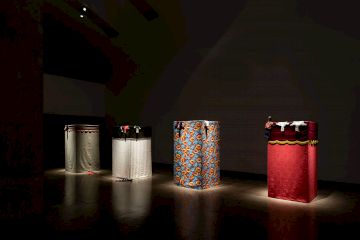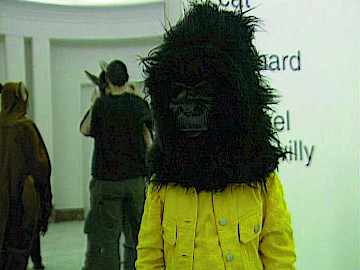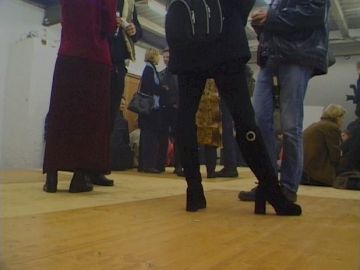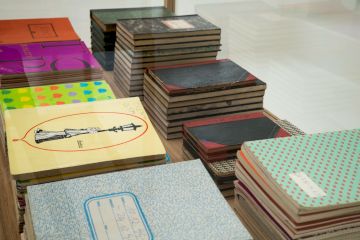Originally conceived for a solo exhibition in Lisbon, Teatro Popular presents objects derived from a Portuguese street theater format commonly known as Teatro Dom Roberto. Its stage (barraca) is a minimalist DIY construction covered with cloth. The construction conceals puppeteers from the public gaze; access to the inner workings of the barraca is denied.
Peter Friedl has created his own theater world, which is both idiosyncratic and plausible. It is an essentially Lusophone universe, fraught with historical references to several centuries, continents, and contexts. The twenty-two handmade puppets that make up the “stage personnel” lie motionless on the ground or peek out of the four barracas. We find, for example, the Sephardic Jew Abraham Zacuto (originally Abraham ben Samuel Zacut, 1452–c. 1515) who fled Spain in 1492 and then advanced to the position
of Royal Astronomer in Lisbon until he also had to leave the country for Tunis, following the persecution of Jews in Portugal; his Almanach perpetuum revolutionized ocean navigation at the time. Or Queen Nzinga of Ndongo and Matamba (1583–1663) who, born over one hundred years later, was famous for her diplomatic skills and persistence in the resistance against Portuguese invaders. There are also characters from the nineteenth and twentieth century, such as the Armenian art collector and philanthropist Calouste Gulbenkian, who died in Lisbon in 1955, allegedly as the richest man in the world due to an unparalleled career in the oil industry. He established the Fundação Calouste Gulbenkian, the foundation behind the Museu Calouste Gulbenkian, which opened in Lisbon in 1969. In the present, we meet the entrepreneur Isabel dos Santos (born in 1973) who became Africa’s first female billionaire. Next to her is her father Eduardo dos Santos, president of Angola from 1979 to 2017, and for many years, chairman of the Movimento Popular de Libertação de Angola, one of the three most important Angolan liberation movements against colonial Portugal in the 1960s and 1970s.
There are also fictional characters, such as Ilsa Lund (Ingrid Bergman), the female protagonist in Michael Curtiz’s classic Casablanca (1942). Exiled in Morocco during her flight from the Nazis, she hopes to obtain an exit visa for safe passage from Lisbon to the United States.
This theater may start to perform at any moment and yet it remains silent and still, as if the Fall of individualization and historiographic fixation had cast a spell on its heroes and heroines. The plot and action are omitted. While in the traditional genre of popular theater the dramatis personæ used to seek refuge from the excesses of history, Friedl explores how history works.











































